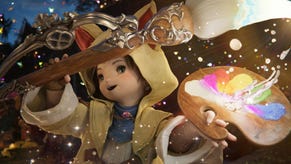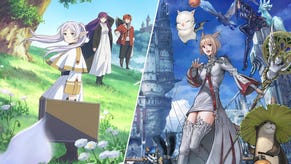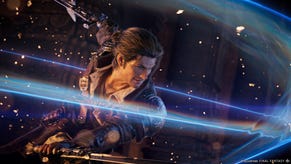Final Fantasy XIV: Reflecting on Five Years of Primals and Tasty Lalafells
As Final Fantasy XIV celebrates five years, we speak to many of the people behind the MMO's success.
This article first appeared on USgamer, a partner publication of VG247. Some content, such as this article, has been migrated to VG247 for posterity after USgamer's closure - but it has not been edited or further vetted by the VG247 team.
Five years ago, one team at Square Enix pulled off the impossible. Final Fantasy XIV originally launched on September 30, 2010 to negative reception. Fans had been playing Final Fantasy XI Online for years at this point and expected an upgrade with Final Fantasy XIV. Instead, the original version of Final Fantasy XIV was panned by fans and critics alike: the class system was confusing, combat was obtuse, and the entire experience felt like it was missing huge chunks.
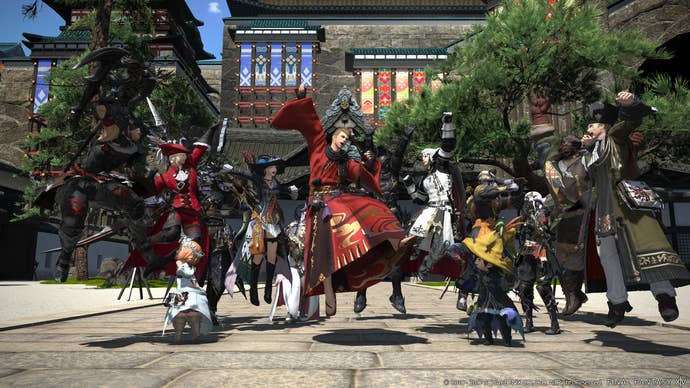
The team received new leadership following the rough launch, with Naoki Yoshida coming on as producer and director. While one team worked on keeping the original version of Final Fantasy XIV alive, another team worked on the next version. The second version was a full top to bottom reboot, with a new engine, new class and combat systems, and an expanded story. After years of effort behind-the-scenes, Square Enix launched Final Fantasy XIV: A Realm Reborn in 2013.
Many games don't get the chance to pivot from failure, and those that do usually don't succeed. The history of the gaming industry is littered with defunct massively-multiplayer online (MMO) games and Final Fantasy XIV was almost on that list. Not only has it survived, it's thrived. Five years later, Final Fantasy XIV is on its second expansion with 14 million registered players.
Given that this year marks the fifth anniversary Final Fantasy XIV, USgamer spoke to a host of developers who continue to make the game what it is to this day. The list of Final Fantasy XIV staff who responded to our questions includes main scenario writer and world lore creator Banri Oda, English localization and translation director Koji Fox, main scenario writer Natsuko Ishikawa, sound director Masayoshi Soken, art director Hiroshi Minagawa, and producer and director Naoki Yoshida. Together, the team provides some insight into everything FFXIV is.
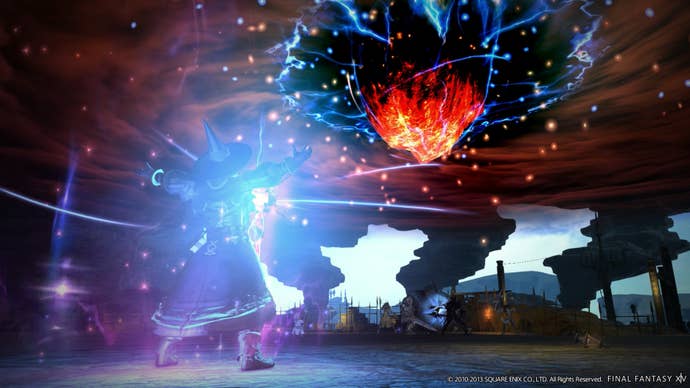
Looking Back on Five Years
USgamer: Over these five years, what was the element within the game you've touched that you're most proud of?
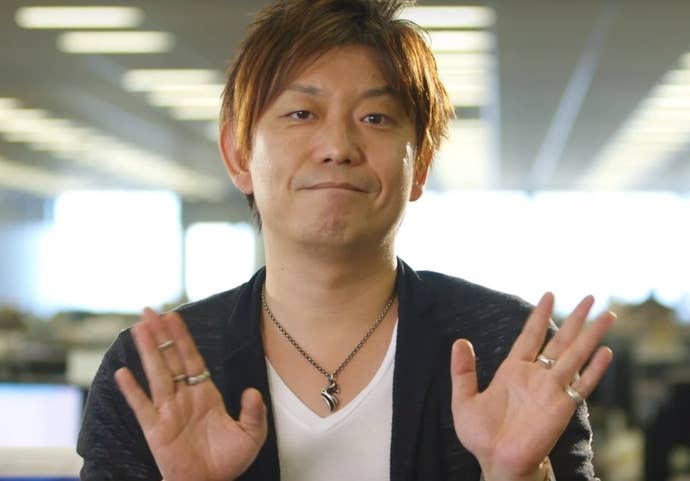
Naoki Yoshida (Final Fantasy XIV producer and director): First of all, thank you for giving us this opportunity!
In the five years since A Realm Reborn's launch, the development team has implemented many different features and content, but personally I feel that the addition of the cross-world party finder was a major contributor to the growth of Final Fantasy XIV. Through this feature, communities that once were contained within a single World (server) were able to expand to the entire population of a data center of worlds. This is a great example of our initial infrastructure aiding in the creation of future development, and overall I believe the feature functions very well.
From a non-development standpoint, I am most proud of our player community, the Warriors of Light. I believe the Final Fantasy XIV community is the best in the world. I am forever grateful to them!
Banri Oda (main scenario writer and world lore creator): Having the player character and protagonist be named the "Warrior of Light." I feel that this name functioned as a keyword to connect both the players who have journeyed with us since the original Final Fantasy XIV and those beginning after A Realm Reborn's release to the world of Hydaelyn and the immense amount of lore cultivated through the entire Final Fantasy series.

Reuniting with in-game friends friends—normal players who don't know my true identity—from the original Final Fantasy XIV in the world of A Realm Reborn really made me appreciate the work I have done thus far. Even now we play together as members of the same free company.
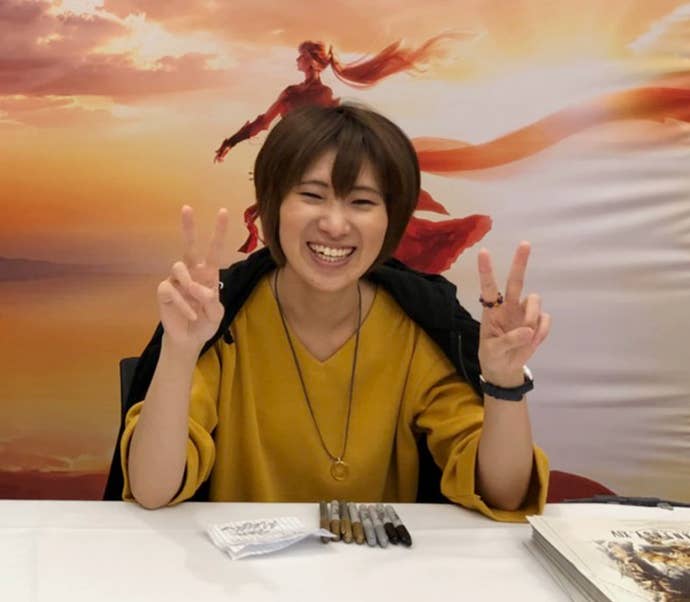
Natsuko Ishikawa (main scenario writer): I would have to say our system that changes non-player character (NPC) dialogue once a player has completed a specific quest or quests. Although it's become pretty standard now, we had not completed this in time for the launch of A Realm Reborn, and so it was a bit of a hindrance to our overall scenario creation process. I'm deeply grateful to the person in charge of implementing this, and for listening to my persistent pleas to have this added.
Masayoshi Soken (sound director): Being a part of the audio development team for A Realm Reborn is something I'm very proud of. We had the hope of resurrecting Final Fantasy XIV, and through our work we succeeded in rebuilding the game with the support of all the players from around the world.
Hiroshi Minagawa (art director): I would say I'm most proud of our implementation of game controls that can support both a keyboard and mouse configuration—an MMO standard—as well as a gamepad setup. I'm especially proud of the gamepad system as it allows for players to easily execute a large number of actions.
There was not much time for trial and error during development of A Realm Reborn, and we really only had one chance to get this system right. Ultimately, we were able to get it to play the way we imagined it would, and this same system has held up through the release of our expansions as well.
Koji Fox (English localization and translation director): Making Lalafells so tasty.
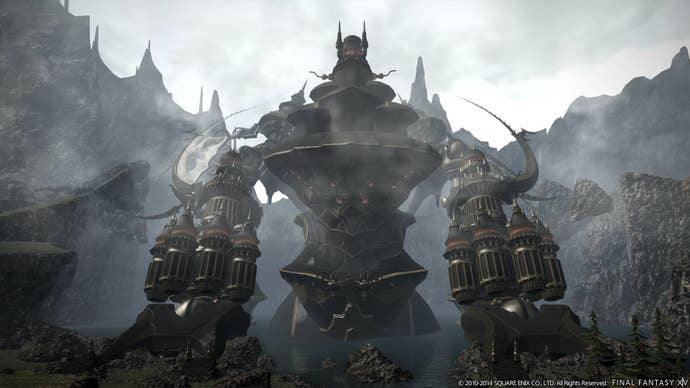
Lore and Localization
What areas of Eorzean lore that may have gone unsung in these five years would you like to tackle in the future of FFXIV?
BO: It's a bit tough to speak in detail about anything that might be related to the future of the story, but I do believe we should delve deeper in to Hydaelyn and Zodiark.
KF: This goes back much further than the five years since A Realm Reborn, but I've always wanted to be able to tell the story of what really happened at the Battle of Silvertear Skies. Why was that lake so important... and what lurked beneath.
Which character or scenario was particularly difficult for you to write, and how was the process of bringing that to life? Which character or scenario just flows out of you in terms of writing?
BO: One difficulty I face is having to create stories involving characters and places with so much background and lore, including that from the original Final Fantasy XIV. I must to be very careful not to contradict new stories and lore with that which is already created.
No matter the character or story arc, I am very careful in my formulation of new content, but I think it's safe to say that it's a smoother process for me to write stories for characters that do not have very many restrictions tied to them.
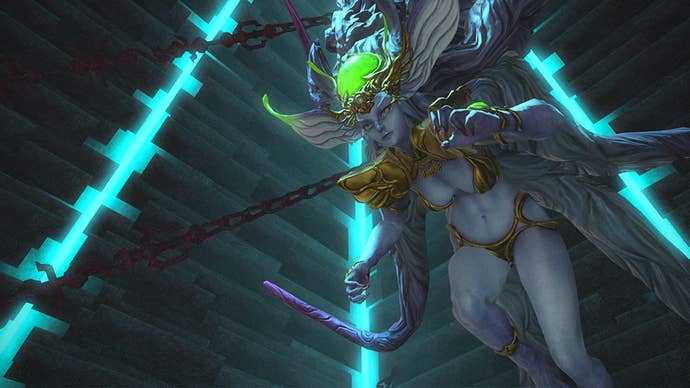
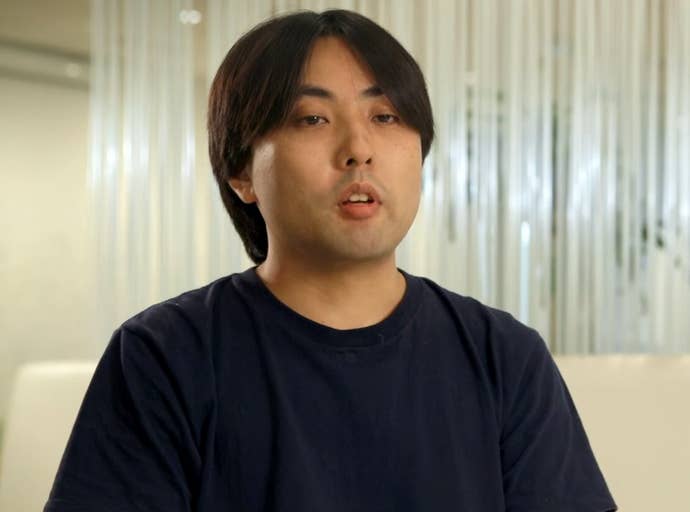
The game's scenarios are largely focused around a player that you can't control. What challenges does that introduce in terms of storytelling?
BO: I am mindful of leaving as much wiggle room as possible for various role-playing opportunities as I challenge the main character of Final Fantasy XIV with different scenarios.
While there may be a single, predetermined goal such as defeating an enemy, but going past that we could get more specific: is the player fighting proactively and of their own volition, or perhaps fighting out of pure necessity? I want to give our players the opportunity to interpret which path the protagonist—their character—chooses whenever I can.
Are there any story ideas that didn't fit with the game's content? Which of those discarded ideas would you like to revisit the most in the future?
BO: The Heavens' Ward, who protect the Archbishop of Ishgard, were originally planned to be an order of dark knights who specifically dealt with dirty work. However, with the introduction of the Dark Knight job in Heavensward, we ended up doing the exact opposite, changing them into a group of honest knights, who were then born as the Heavens' Ward.
By the way, I came up with the idea of a story that depicts what becomes of the Heavens' Ward following the events we see in Heavensward, and I even showed it to producer and director Yoshida. He told me it was a really interesting idea, but that my focus needed to be on Stormblood during that time! Unfortunately, I had to lay this idea to rest.
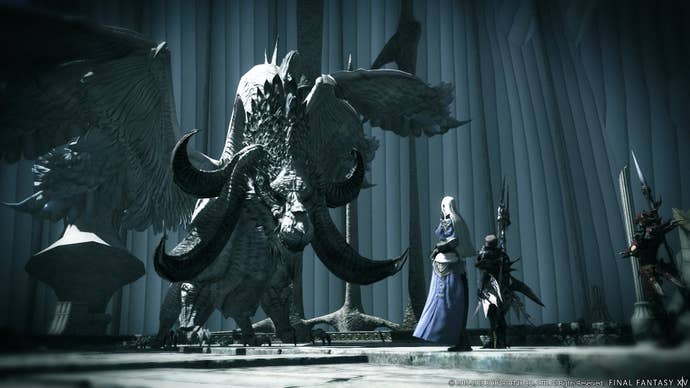
Each patch and expansion offers more dungeons, raid content, and Deep Dungeons for players. How early in the process do you get involved from a story perspective; is the content created and then you have to determine how it fits in the overall story of FFXIV, or vice versa?
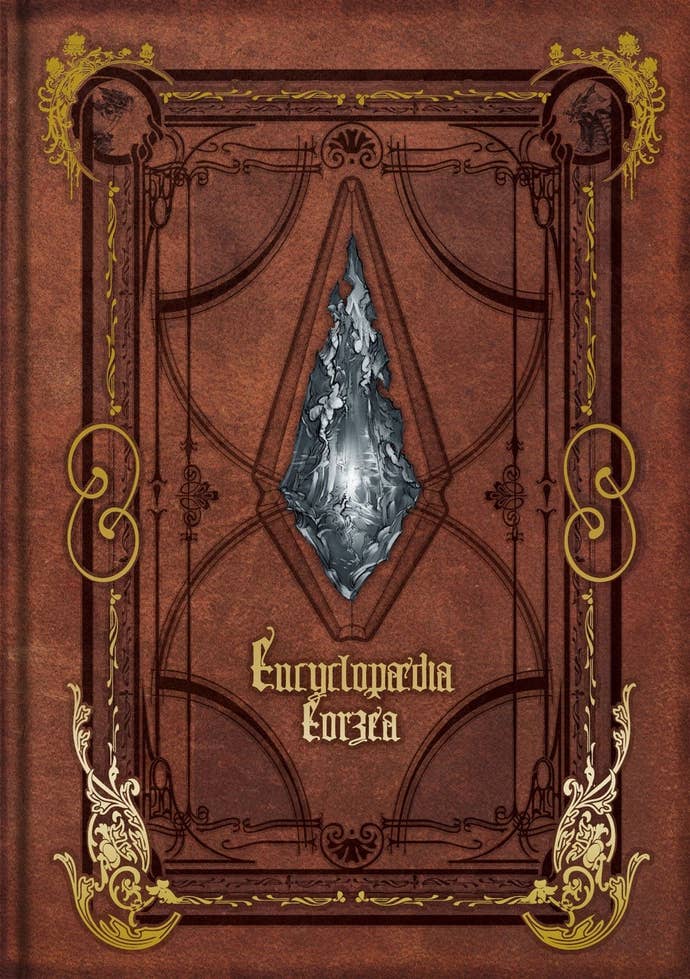
BO: We actually see both instances that you mention. Sometimes the overall direction of the content on the gameplay side is nailed down before the lore team and scenario writers go in and add some flavor. We also work in the reverse, where the lore and story flesh things out before the content itself is created.
In either case, we never move forward with an idea without paying attention to each other. We actively discuss between the teams about potential ideas for story or game content, and get opinions from them as we progress with our planning.
Encyclopaedia Eorzea was an amazing book. Did you enjoy players getting such a deep dive into the game's lore? While a second lore book is on its way, do you envision your team updating this information as it evolves in the future?
BO: The Encyclopaedia Eorzea was written as if it were an actual compendium of what intellectuals residing in Eorzea during the current era thought to be the truth. If we were to take a real world example, let's say a book about dinosaurs, I would have to say the books I read as a child are quite different from more recent publications. This is because there has been progress in research and new fossil discoveries which have overturned existing theories. This in turn required an update to these texts.

That being said, Volume I and Volume II of our encyclopedia may both actually contain content that is intentionally different from the truth for this very reason.
KF: As an American player, for most of my time growing up I always watched with jealous eyes as Japan got all the companion novels, guide books, art collections, and other lore-expanding goodies to my favorite games. So, when word came to me that the XIV team was thinking of doing an Ultimania-style book for XIV, I insisted that we do one in English as well. Sure, it meant a lot of extra work for the English Localization team (the first book clocked in at about 150,000 words—pretty much equivalent to 1.5 of our patches), but getting this info to our fans in the west was important. Seeing how well it was received has probably been the most rewarding thing for me over the course of my decade on the project.
The Art, Aesthetics, and Audio
It's been a long road for you, going from director of previous game, to lead UI designer on FFXIV, to art director with Stormblood. How have you made your unique fingerprint on FFXIV with Stormblood, considering the previously-established art of FFXIV and the characters from previous FF games?
HM: Actually, ever since A Realm Reborn—during which time my title was lead UI designer—I helped with the creation of the title screen visual. I also worked alongside the background design team to fine tune cutscene visuals. Yoshida requested an overall shift to a darker tone with a strong contrast of light and shadow for Heavensward, and I had a hand in help achieving this. Even though my title changed to art director when we transitioned into Stormblood development, I actually found myself doing very similar work.
However, the experiences gained and the strengthened synergy between our team members from this past work helped immensely during Stormblood development. I didn't have to provide overbearing orders or direction to my team; they took initiative and produced strong results.
Everything these individuals have worked so hard to create has not only produced great content, but also a great team. If anything, this whole experience was a very valuable team-building opportunity.
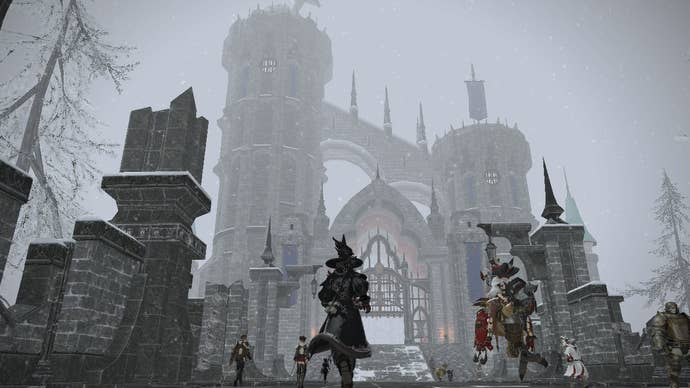
FFXIV is a worldwide title. Does that influence your overall art direction?
HM: Final Fantasy XIV being a global title does not really influence our overall art direction. However, I watched a lot of TV and movies, and played many games created overseas while growing up, which has had a definite impact on my overall art style and direction.
When it comes to UI and UX, I make sure to be very mindful that FFXIV is a global title, as the standard for Japanese gaming controls are rather unique. We want to make sure these elements are accessible to all players.
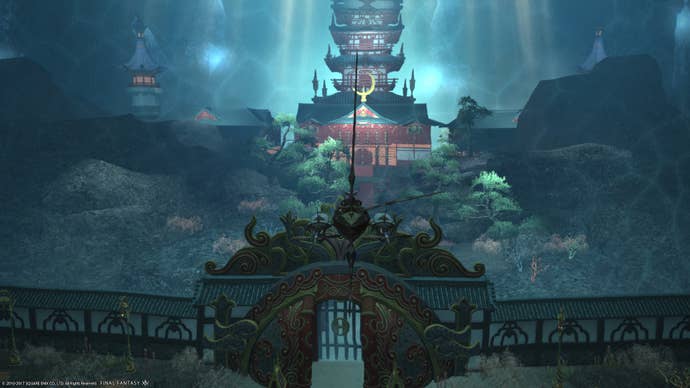

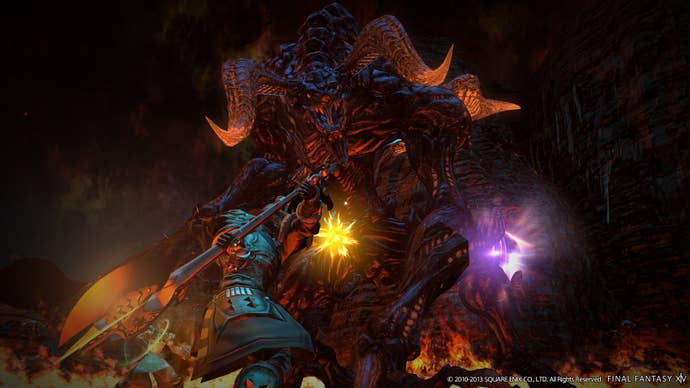
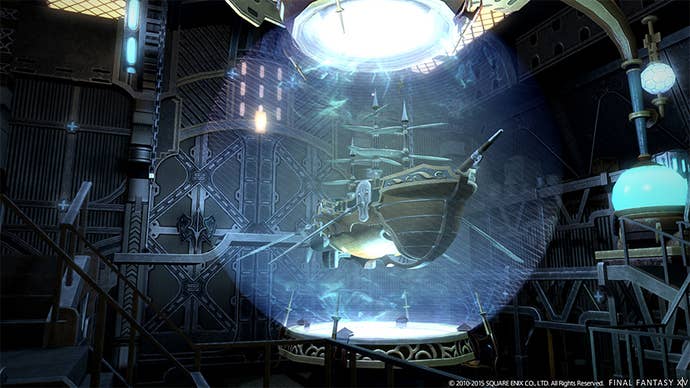
Heavensward had a medieval European theme, while Stormblood feels East Asian in styling. What other art styles or themes would you like to tackle?
HM: Interestingly enough, at the time of this writing, we just so happen to have some art interns from Saudi Arabia in our office to get a firsthand experience in game production. Their overall concept of architecture and décor is very different from ours, which leads to extremely interesting designs and ideas.
Our current art team consists of only Japanese staff members—I think it would be great if people from differing cultures could join us as well!

There's a fan poll to build a "Best Of" album from the nearly 400 songs in FFXIV's soundtrack. What is your personal Top 10?
MS: I feel like my rankings change depending on how I feel the day I'm asked this! We've been very busy with Patch 4.4, and I feel like the below order is my current list of picks:
- "Heavensward": Everything we did with this song felt impossible from a music industry perspective: the production period, what was requested of me and the team, and even just the fact that we were making the song as it exists today! Despite these challenges, we were successful, and this is now a song that I can listen to and say, "I did it!"
- "Torn from the Heavens": The revival of FFXIV began here. I am personally fond of this song.
- "Under the Weight": I felt that we made an impact with this song, and created a very unique battle experience in Final Fantasy XIV. This song shocked not only its creators, but also those who experienced it in game.
- "Oblivion": The creation side of music and the listening side of music are two very different places for me, but I personally like to be a listener for this one. The way [main vocalist Ayumi Murata] sings is the best of the best.
- "Rise": Another song I personally love listening to.
- "Liquid Flame": The overall request for creating this song had a lot of challenges tied to it, but I felt I produced some very satisfying results.
- "Imagination": Despite being a semi-orchestral piece, the progression is very rock, right? "Damn it, I can't lose now...Let's do this!" That feeling is what rock is all about!
- "Spiral": Listening to this song now, I can't help but feel there are many parts I want to redo. Yet, this roughness to the song makes me realize that there was a lot of improvisation in my approach; I selected this song for the list with the intent of making it a lesson to myself.
- "Ultima": Following the orchestra concert, I had the complete realization that this is a great song.
- "Rise of the White Raven": When I listen to this now, I am baffled by how the me at that time was able to create such a song. But, you know, this song is really well done...
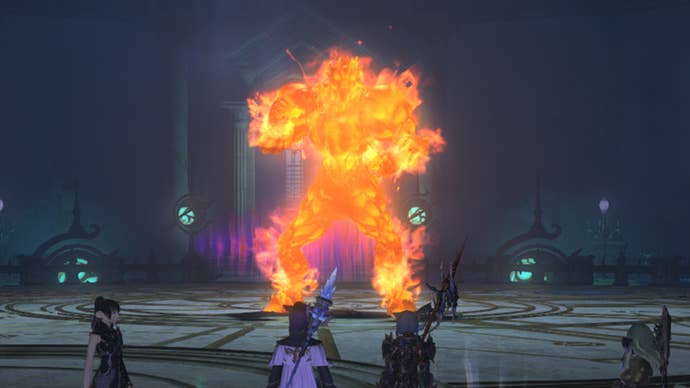
[Editor's Note: USgamer previously interviewed sound director and lead composer Masayoshi Soken earlier this year in regards to Final Fantasy XIV and the Eorzean Symphony. Take a look at that interview for more insights into the composer's thoughts on the game and its long history.]

The Future of Final Fantasy XIV
Half a decade of content means that have to start thinking about "mudflation": rising player/enemy stats and damage numbers. Have you already thought about how you'll handle those situations?
NY: The battle system and associated formulas in Final Fantasy XIV were designed with the assumption of longterm operation. However, when we were making the transition from Heavensward to Stormblood, we adjusted the formulas in order to lessen the inflation curve and jump in numbers. We will continue to make these types of tweaks to curb inflation before it becomes a major issue.
It's been five years now and the landscape of MMOs has changed with subscription-less titles like Destiny 2 and The Division. Do you see FFXIV ever shifting to a different business model?

NY: I have spoken about this more than a few times in other interviews. If I were to talk about the various business models for MMOs, it would be a discussion lasting for at least 30 minutes—I'd recommend that readers look over some of those past interviews.
That being said, we cannot treat a game's design and payment model as isolated ideas; it would be nonsensical to talk about them in this way. When Final Fantasy XIV was relaunched as A Realm Reborn, in order to keep our promise to the players, we designed the game under the assumption that it would follow a monthly subscription model. We are able to operate very successfully because we have stuck to our design framework that follows that payment model.
There is really no reason we would change from our current model, with perhaps the exception of an overwhelming demand for this from our players. In the hypothetical situation that we do make that shift, we would also need to make changes to our game design structure. I personally do not believe the release of non-subscription titles is due to any change in the market, but it is more of a diversification of the game market following the introduction of that new model.
The future of Final Fantasy XIV remains bright. This weekend marks the Final Fantasy XIV Fan Festival in Las Vegas on November 16 to 17, and the likely announcement of the next expansion. With each expansion, the team gets better at its craft and the experience improves for the player. Hopefully when the tenth anniversary comes around, fans will still be singing the praises of Final Fantasy XIV.



